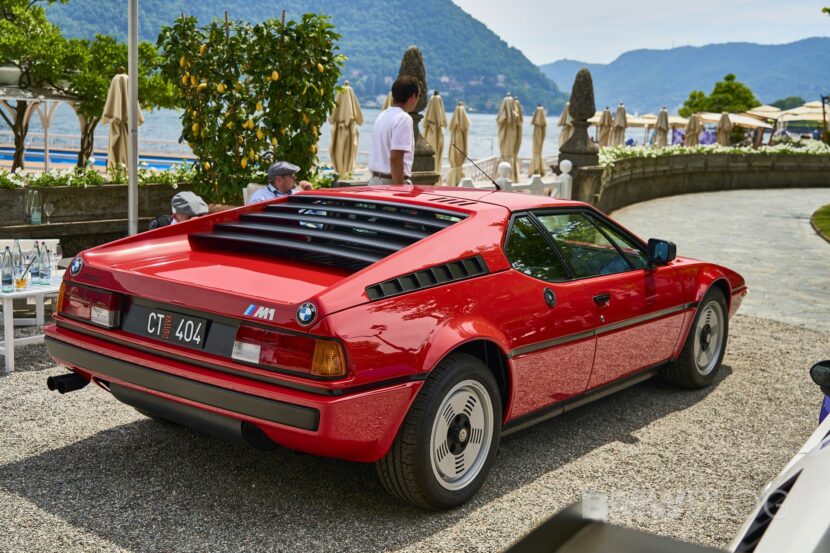Just about every BMW enthusiast knows the M1 didn’t have an easy life, especially in its early days. Bavaria’s first and only supercar wasn’t an all-German effort as various Italian companies contributed to creating the first dedicated M model. A new video refreshes our memory about how the iconic E26 came to be, beginning with the failed collaboration with Lamborghini due to the raging bull’s financial troubles.
Designed by Giorgetto Giugiaro with influences from the 1972 Turbo concept penned by Paul Bracq, the first of only two mid-engined BMWs was hand-assembled by Baur in Stuttgart. It used a Lamborghini-developed chassis manufactured by Marchesi wrapped around a fiberglass body made by Trasformazione Italiana Resina (TIR). The cars were ultimately shipped to Munich for the final inspection before being delivered to customers. Just 460 units of the wedge-shaped homologation special were ever made.
While the M1 was a collaboration between multiple companies, the engine was all BMW. Mounted behind the seats, the inline-six 3.5-liter “M88” produced 277 horsepower and 330 Newton-meters (243 pound-feet) of torque. Output was routed to the rear axle via a five-speed manual transmission developed by ZF. The M88 engine went on to power several other models, including the E24 M635CSI and E28 M5, while South Africa got an E23 745i. For Group 5 regulations, a variation of the same engine pushed out well over 800 horsepower.
The double wishbone suspension was the work of ex-Lamborghini employee Giampaolo Dallara for a car that had a dry weight of just 1,300 kilograms (2,866 pounds). Flat out, it hit 265 km/h (165 mph), which BMW says made the M1 “the fastest German road sports car of the era.”
BMW revisited the idea of doing another M1 in 2008 with the Hommage Concept but it sadly never materialized into a production model. 2022 saw the launch of the company’s second dedicated M car ever. However, the XM is a front-engined, plug-in hybrid SUV, so far from being a direct successor to the supercar of the late 1970s and early 1980s.
Source: Number 27 / YouTube
via Tingle Cars
